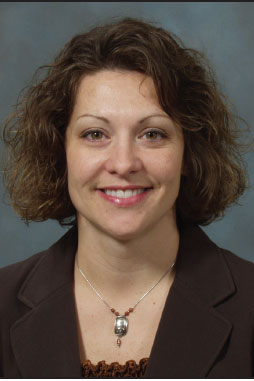It’s been a whirlwind since the holidays, hasn’t it? After enjoying time with family and friends, I find myself now getting caught up with work, recently attending the AVMA leadership conference two weekends ago and then boarding an early Monday morning flight to North Carolina to visit farms. All the while, I was thinking of what to write about in my president-elect’s message. Just then, the gentleman sitting beside me on the plane asked “I can’t help but ask you what you do for your job?” He was inquiring after peeking at my laptop screen while I worked on “renewing” my PQA Plus PowerPoint presentation for a scheduled training in North Carolina that week. I discussed with him that I was a veterinarian for a pork-production company and a substantial part of my job is to train our animal caregivers on husbandry, medical-treatment decisions, and food safety. After my brief explanation he said “So pigs have vets, too.” His comment made me flash back to my weekend where I sat in a room full of over 600 veterinarians with widely diverse job descriptions, yet a very specific purpose – providing exceptional care for animals. I proceeded to assure him that pigs do have veterinarians and in fact there are over 1300 of them that belong to our association.
What does our association represent? That was a question from the facilitator during the AVMA leadership conference. I took my own notes at the meeting and then compared my thoughts to those that are written as our official mission on the AASV Web site (see sidebar). I encourage you to do the same. I think you will find that our goals are defined specifically and appropriately.
This same facilitator provided good inspiration to think about what we represent in our careers. He conveyed that your organization should be “cult-like” about the core: who we are, why we exist, why and what we believe. I think swine veterinarians are “cult-like” about swine medicine and diseases. I haven’t met one who isn’t passionate when talking about pig diseases!
At the AVMA meeting, we also discussed boards of directors and executive teams, specifically how to make them more effective. An example was shared from a book entitled The Will to Govern Well,1 listing the following three characteristics of an effective board:
1. A culture of trust among staff and volunteers with common agreement on what defines success.
2. The ability to make decisions on knowledge rather than opinion.
3. A nimble infrastructure with work and decision-making systems that can respond efficiently and effectively.
Sitting in that room with other veterinarians who represent state association boards or specialty practice boards, I was proud of the American Association of Swine Veterinarians. I am confident we have these three key points within our organization. It really does relate back to the core or common reason for us being members.
I want to touch on the first point mentioned in our mission: promoting the development and availability of the resources which enhance the effectiveness of professional activities. This point goes back to my story of “pigs have vets, too.” How do we as an association promote what we do and educate consumers about swine care and production? My answer is “one person at a time.” Take every opportunity to talk about what we do and how it impacts the safety of our food supply. Talk to your family members at gatherings. Work with your children’s teachers or grand-children’s teachers to be part of the educational section about agriculture and where food comes from. Work with local FFA and 4-H groups, volunteer to talk at local civic organizations, get involved in National Pork Board’s “Operation Main Street,” NPPC’s Veterinary Public Policy Advocacy Program, NPPC’s LEADR program, and take any other opportunity that presents itself. Take the challenge – it will be rewarding!
I took this opportunity with the gentleman sitting next to me on the plane, and on the basis of some comments he made during our exchange, I know he learned some positive things about our industry. If we take opportunities like these to provide confidence that the care and medical treatment of pigs is guided by veterinarians, then we will make a difference one person at a time: after all, pigs have vets, too.
I look forward to this coming year serving as president of the AASV and promoting our organization and our profession. I hope to see you in Denver!
Reference
1. Tecker GH, Meyer PD, Crouch B, Wintz L. The Will to Govern Well. 2nd ed. Washington, DC: ASAE Foundation. 2011: 7.
-- Tara Donovan, DVM

